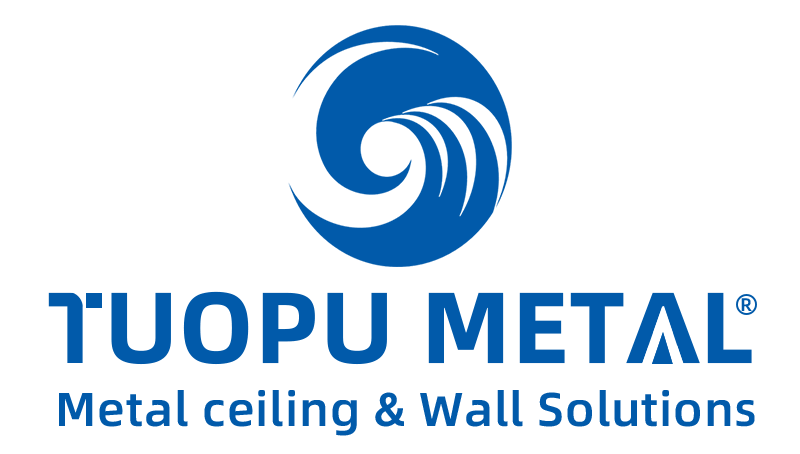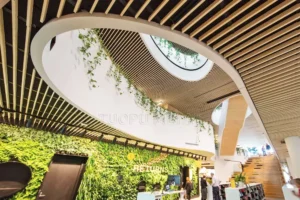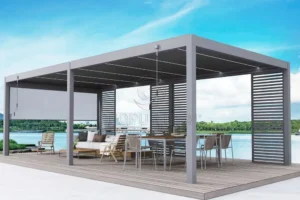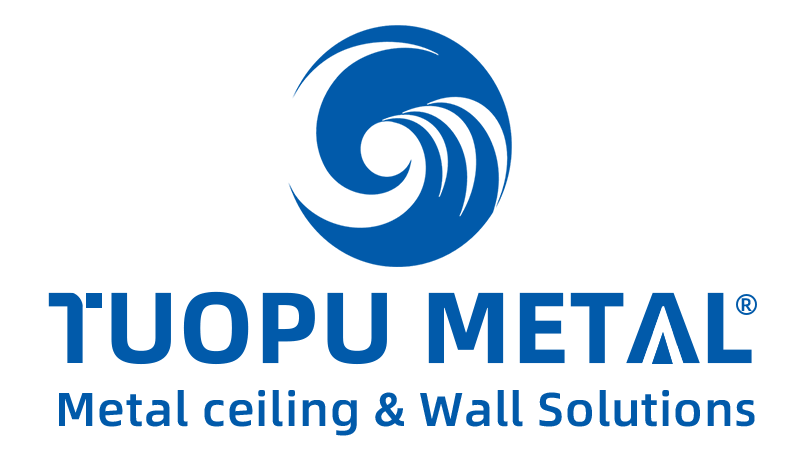Aluminum panels are used a lot in today’s buildings. They work well for ceilings, façades, and wall cladding. Many architects choose them because they look clean and modern. They are also strong and lightweight, which helps during installation and long-term use.
This topic matters because the type of aluminum panel affects how a building performs and how much it costs. It is useful for people working on commercial buildings, airports, shopping malls, and high-rise projects. Contractors and developers in areas with strong sun, rain, or salt air—like Southeast Asia or coastal cities—need materials that last longer and stay in good shape.
There are two main types. Aluminum Honeycomb Panels (AHPs) are strong and firm. They are good for big projects that need better support. Aluminum Composite Panels (ACPs) are easier to install and cheaper. They are often used where looks and budget matter most. This article compares both to help builders pick the right one.

Overview: Definitions and Core Features
There are different types of aluminum panels, but Aluminum Honeycomb Panels (AHPs) and Aluminum Composite Panels (ACPs) are by far the most popular. These two types are used in various construction projects. To the untrained eye, both might seem similar, but in fact, they are quite different internally.
Also known as AHPs, Aluminum Honeycomb Panels embody a peculiar structure. The core is an aluminum sandwich constituent which is placed in between two thin aluminum slices. These make the panel robust whilst simultaneously ensuring it is lightweight. This is important for regions where the panel has to support a lot of weight yet cannot be heavy. AHPs find applications in airplanes, vessels, and building façades where lightness and a polished appearance are desired.
Aluminum Composite Panels, or ACPs, are made in another way. They have a plastic core, usually LDPE or PE, between two aluminum layers. The plastic core makes the panel cheaper to produce. It also gives the panel good flexibility. This makes ACPs a common choice for building cladding, indoor walls, signs, and displays.
Each panel type has its own purpose. AHPs are better for projects that need high strength. ACPs are better for projects with tight budgets and simple designs. Choosing the right one depends on what the project needs most.
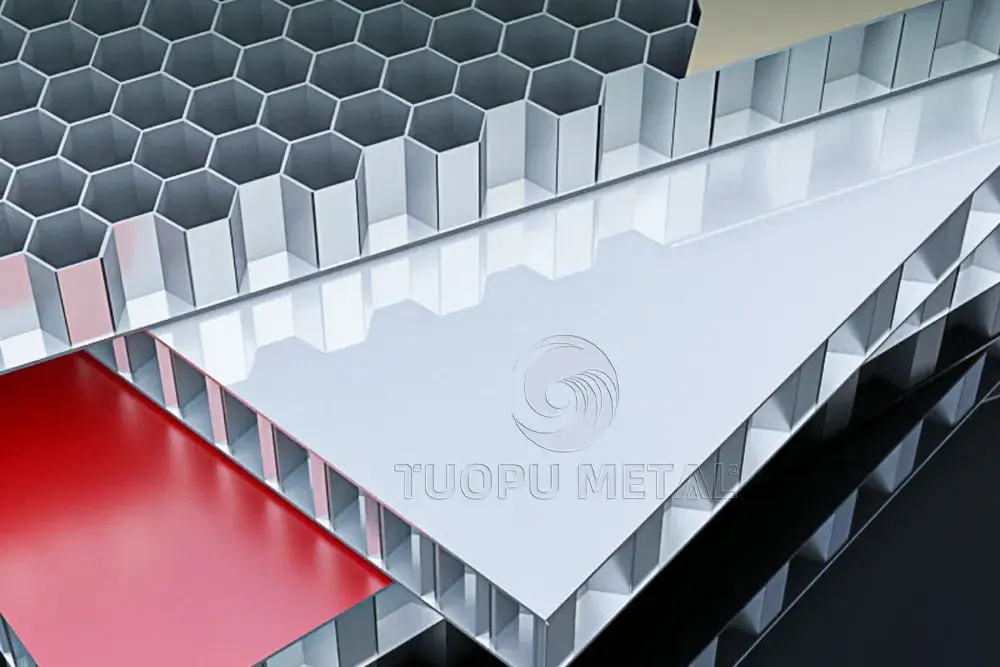
Structural Differences: Core Design and Performance
| Property | Aluminum Honeycomb Panel | Aluminum Composite Panel |
| Core Material | Hexagonal aluminum honeycomb core | Solid plastic core |
| Structural Feature | I-beam-like structure for even load distribution | Rigid plastic core with limited flexibility |
| Weight | Lightweight design | Heavier (plastic core has higher density) |
| Load-Bearing Capacity | High strength-to-weight ratio, suitable for heavy-load scenarios | Effective for flat surfaces but prone to deformation under complex shapes |
| Shape Adaptability | Maintains integrity in complex shapes (e.g., L-shaped walls, rounded corners) | Best suited for flat or minimally curved designs |
| Surface Quality | Typically requires additional cladding | Smooth and flat surface ideal for clean architectural lines |
| Applications | Projects requiring strength, lightweight design, and custom shapes (e.g., curved facades) | Cost-effective projects prioritizing flat aesthetics (e.g., standard cladding, signage) |
| Installation & Cost | Higher cost but lightweight for easier installation | Lower cost and easy installation, but limited load-bearing capacity |
Additional Notes:
AHPs: The Aeronautical Honeycomb Panels’ (AHPs) geometry is analogous to beehives which provides a high strength-to-weight ratio allowing it to be utilized in aerospace engineering or luxury architecture.
ACPs: The use of cores such as plastic and polyethylene compromises the fire resistance of these panels. Choose the relevant fire resistance ratings appropriate to the needs of the project.
Unlimited materials, including aluminum, can be used to cover both panels, but AHPs offer better 3D forming while ACPs are concerned with infusing depth and texture into surfaces.
Material Composition: Cores and Coatings
Aluminum Honeycomb Panels (AHPs) use a strong and light core. The core is made from 3003H24 or 5052AH14 aluminum alloy. It has a honeycomb shape, and the foil thickness is about 0.04 to 0.06 mm. This design keeps the panel light but firm. The surface is finished with PVDF or FEVE fluorocarbon coating. These coatings protect the panel from sun, rain, and wind. They help the panel last for 15 to 20 years without fading or peeling.
Aluminum Composite Panels (ACPs) use a plastic core. Most ACPs use LDPE or PE. These materials are low cost and easy to shape. But they do not resist fire well. To reach A2 fire safety level, they need extra treatment. Like AHPs, ACPs are coated with PVDF. This coating helps keep colors bright and protects against UV damage.
Both types of panels use coatings for better outdoor performance. The main difference is inside. AHPs have a metal honeycomb. ACPs have a plastic center. Each material gives the panel its own strength and purpose. Understanding what’s inside helps builders choose the right one.
Performance Comparison
Aluminum Honeycomb Panels (AHPs) and Aluminum Composite Panels (ACPs) offer different levels of performance. AHPs weigh about 6 kg per square meter at 10mm thickness. This makes them around five times lighter than solid aluminum and ten times lighter than steel. The honeycomb core spreads pressure evenly, which gives good strength with less weight. ACPs have a plastic core, so they are heavier. But they are still easy to carry and install on-site.
In harsh outdoor environments, AHPs last longer. They do not rust or bend easily. Their structure holds up well in heat, cold, and rain. Many buildings with AHPs look new even after 20 years. ACPs may not last that long. The plastic inside can weaken when exposed to water, sun, or changing temperatures.
AHPs also help reduce heat and noise. The air pockets inside lower heat flow and block sound. They can lower noise by up to 30 decibels and have a thermal conductivity between 0.104 and 0.130 W/m·K. ACPs do not block sound or heat well. Extra materials may be needed in buildings where this matters.
Both panels are useful, but AHPs offer better performance where strength, insulation, and long-term value are important.
Application Scenarios
Aluminum Honeycomb Panels (AHPs) are used in many high-performance fields. They are often found in aerospace projects like aircraft interiors. The panels are also used for marine partitions and cleanroom walls because they are strong and clean. In tall buildings, AHPs work well for façades because they are light and flat. They are also used in solar panel bases and in curved designs like domes or L-shaped corners. Their structure helps hold shape even under pressure.
Aluminum Composite Panels (ACPs) are more common in everyday construction. Many shopping malls and office buildings use ACPs for exterior cladding. The panels also appear in signs, wall decorations, and ceilings. Inside homes or shops, ACPs are often used for furniture, cabinets, and quick renovations. Their cost is lower, and they are easy to cut and install. This makes them a good choice for projects that need speed and flexibility. Each type of panel fits different needs, based on where and how it will be used.
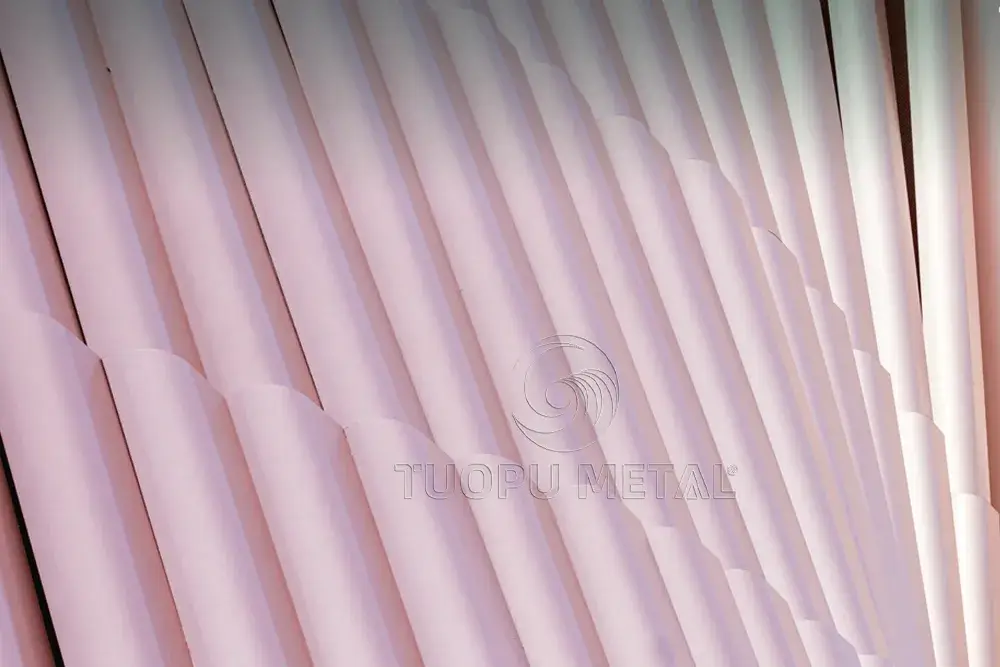
Pros and Cons
AHPs
Pros: AHPs are much easier to install as they are light in weight. They are safe to use in many construction works as they are fire-rated A2 and are also recylcable, eco–friendly, and have a high load-bearing capacity which enables them to support sizeable structures without bending.
Cons: They tend to be costly when compared to other materials which are less expensive and can be obtained by other methods. This, in turn, brings in the need to require other special installation methods, which increases the costs in other areas like time or additional labor.
ACPs
Pros: Unlike AHPs, ACPs are cheap and easy to customize, aiding in numerous designs. They also help in saving time and money when it comes to labor costs as they are simple to install.
Cons: Unlike AHPs, ACPs have less resilience making them prone to slower degradation even in extreme conditions. Furthermore, they have minimal fire resistant capabilities unless change is made for a superior fire rating, and therefore are not as strong.
Selection Guidelines
Project Requirements:
If the project needs high strength and light weight, such as for airports or stadiums, AHPs are the better choice. They can handle heavy loads while keeping the structure light. For budget-focused projects like retail façades, ACPs are more cost-effective and still offer good performance.
Environmental Factors:
For areas with coastal conditions or high UV exposure, AHPs with PVDF coatings are ideal because they resist corrosion and maintain their appearance longer. When fire safety is a concern, AHPs are naturally fire-resistant, while ACPs need fire-retardant cores to meet safety standards.
Conclusion and Trends
To sum up, AHPs and ACPs aluminum ceiling and facade panels have distinguished benefits that address the varying requirements of contemporary construction undertakings. Considered weight bearing materials, AHPs are ideal for high-performance applications due to their military-grade weight and endurance. As seen in aerospace engineering, transportation, and premium architectural facades, AHPs are utilized when striking a balance between structural integrity and weight forging absolute necessity.
Standard ACPs thermoplastic cores and mobile finishes make them more project appropriate when flexibility and cost-effectiveness take the leading role, since inter project design changes are aplenty. These features, in addition to the various building uses from furniture to front facing signage make these panels indispensable when versatile aesthetics become a project focal point.
When choosing the right material, project managers along with architects require detailed instructions for all specific project requirements. Criteria such as structural requirements, ecological scope, finances, and design ambitions must all be taken into account. Knowing the material compositions along with performance traits precisely aids in ensuring the selected panel will meet and outperform the project expectations in the long run.
In the future, AHPs will likely be integrated into green and sustainable building designs because of their recyclability, while ACPs will still dominate in low-cost areas, particularly in modular prefabricated construction systems where easiness of change and quick installation are critical.
